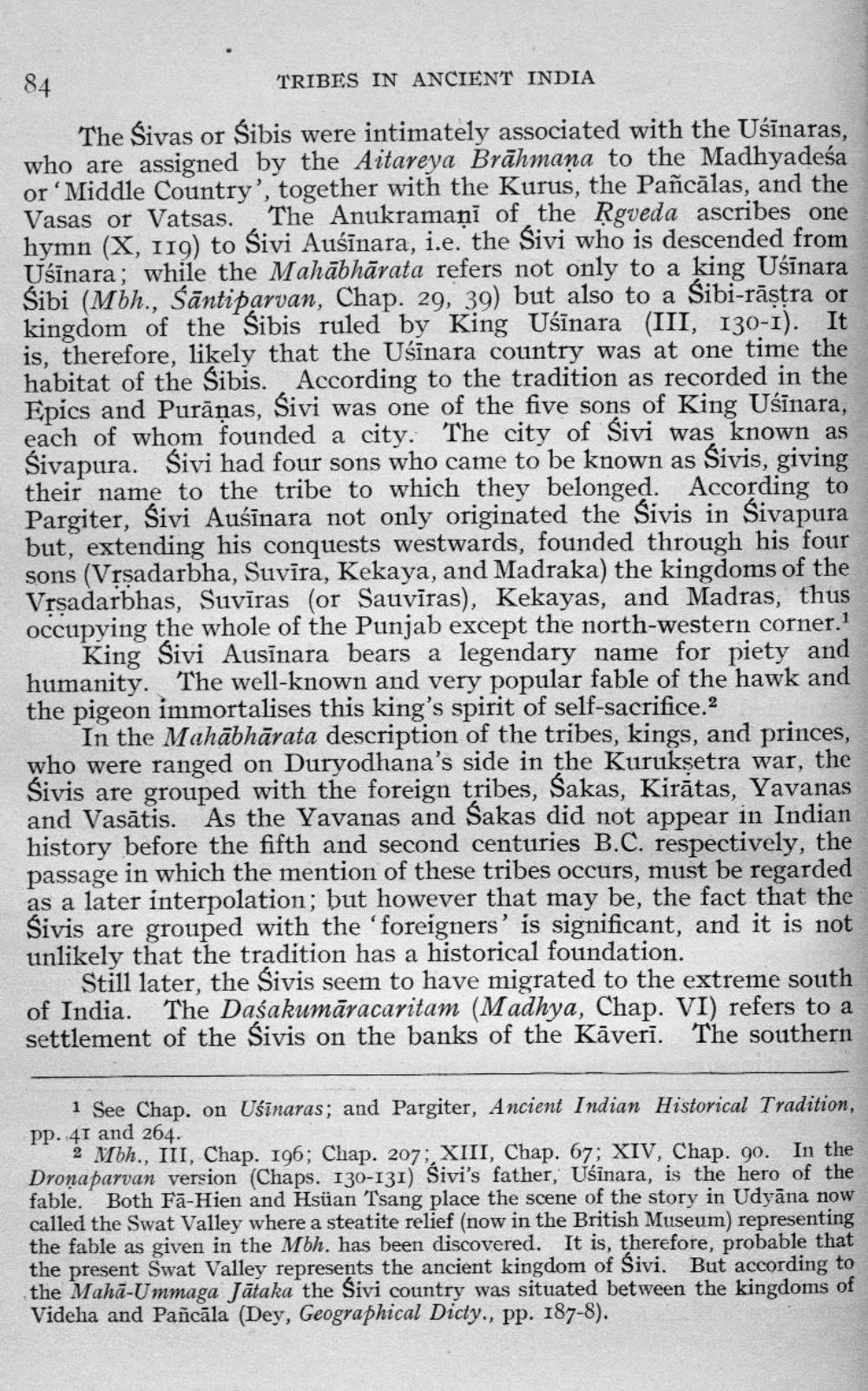________________
TRIBES IN ANCIENT INDIA
The Sivas or Śibis were intimately associated with the Uśīnaras, who are assigned by the Aitareya Brāhmana to the Madhyadesa or 'Middle Country', together with the Kurus, the Pañcālas, and the Vasas or Vatsas. The Anukramaṇi of the Rgveda ascribes one hymn (X, 119) to Sivi Auśīnara, i.e. the Sivi who is descended from Ušīnara; while the Mahābhārata refers not only to a king Uśīnara Śibi (Mbh., śāntiparvan, Chap. 29, 39) but also to a Sibi-rāstra or kingdom of the Sibis ruled by King Uśīnara (III, 130-1). It is, therefore, likely that the Usinara country was at one time the habitat of the Sibis. According to the tradition as recorded in the Epics and Purānas, Sivi was one of the five sons of King Usinara, each of whom founded a city. The city of Sivi was known as Sivapura. Sivi had four sons who came to be known as Sivis, giving their name to the tribe to which they belonged. According to Pargiter, Sivi Auśīnara not only originated the Sivis in Sivapura but, extending his conquests westwards, founded through his four sons (Vrsadarbha, Suvīra, Kekaya, and Madraka) the kingdoms of the Vrsadarbhas, Suvīras (or Sauvīras), Kekayas, and Madras, thus occupying the whole of the Punjab except the north-western corner.
King Sivi Ausīnara bears a legendary name for piety and humanity. The well-known and very popular fable of the hawk and the pigeon immortalises this king's spirit of self-sacrifice.2
In the Mahābhārata description of the tribes, kings, and princes, who were ranged on Duryodhana's side in the Kuruksetra war, the Sivis are grouped with the foreign tribes, Sakas, Kirātas, Yavanas and Vasātis. As the Yavanas and Sakas did not appear in Indian history before the fifth and second centuries B.C. respectively, the passage in which the mention of these tribes occurs, must be regarded as a later interpolation; but however that may be, the fact that the Śivis are grouped with the foreigners' is significant, and it is not unlikely that the tradition has a historical foundation.
Still later, the Sivis seem to have migrated to the extreme south of India. The Daśakumāracaritam (Madhya, Chap. VI) refers to a settlement of the Sivis on the banks of the Kāverī. The southern
1 See Chap. on Usinaras; and Pargiter, Ancient Indian Historical Tradition, pp. 41 and 264.
2 Mh., III, Chap. 196; Chap. 207;, XIII, Chap. 67; XIV, Chap. 90. In the Dronaparvan version (Chaps. 130-131) Sivi's father, Uśinara, is the hero of the fable. Both Fā-Hien and Hsüan Tsang place the scene of the story in Udyāna now called the Swat Valley where a steatite relief (now in the British Museum) representing the fable as given in the Moh. has been discovered. It is, therefore, probable that the present Swat Valley represents the ancient kingdom of Sivi. But according to the Mahā-Ummaga Jātaka the Sivi country was situated between the kingdoms of Videha and Pañcāla (Dey, Geographical Dicty., pp. 187-8).




